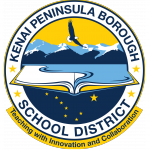Two or three times each year, I receive letters from students that were written for a class assignment. This past week, three such letters arrived. Two of them asked me to think about the need for the district to provide incentives to help motivate students to attend school. With the increased focus on a school’s attendance rate and the correlation of attending school regularly with more learning, the logic of the district offering an incentive to help students show up, on the surface, makes sense. The Anchorage School District partnering with a automobile dealership to give away a car to a student who has perfect attendance, is partially driving the students’ appeal to me. I wrote back and shared that I did not feel that extrinsic rewards are the way to go. I offered the predictable you don’t get these as an adult and used paying taxes or being at work on time as reasons why we do not want to create such an expectation for attending school. A couple of days later, I stumbled upon an article1 that synthesized research on the use of extrinsic rewards in school. The findings were that an extrinsic reward that is designed to control behavior will ultimately reduce intrinsic motivation and hence, can only be considered as a short term solution to a bigger issue. The more pressing bigger issue for for me then, is why some students do not attend school as faithfully as others.
I expect that if asked, you will receive a lot of different answers for why students elect to miss school. Some will say that school is not relevant, some will say it is boring and others I suspect, will have excuses for missing school that are external such as family obligations. So what to do? I feel that increasing the level of autonomy that a student has over his or her studies will increase intrinsic motivation to attend school. As a student ages, I feel that it is more and more important to have the content of the assignments driven by the student. Here’s the concept, you get to choose how you demonstrate how you have mastered it with the expectation that you will share or teach what you have done. We all respond to the pressure to look good in front of our peers- why not use this intrinsic motivation to help students stay focused on school? If we offer a free car for not missing school perhaps we should push the IRS to give us an ice cream sundae for sending in our taxes.
1 Gardiner, Steve. “ Stop the pay, stop the play.” Phi Delta Kappan 95.8 (2014): 39- 42



Change to improve
Last week, the Assembly voted to increase our funding for next year by $500,000. The vote to do so, while close, illustrates a general confidence in the district to use our funds wisely. I am appreciative of Mayor Navarre’s lead on this increase and to the Assembly for their support. Prior to the vote I shared some information about the district including the good news that our graduation rate is inching up. This important measure of our district is for many, what defines us. I know that all of our borough’s residents expect our students to complete high school. There is also an expectation that the district will recognize the changing needs of our students and in turn, refine its practices to help them earn their diplomas. The need to improve our practices is on-going and was heightened when the legislature created a more favorable set of rules for the establishment and funding of charter schools. My take from these changes is that there is a growing desire to do away with some of the old of public education and embrace alternatives to the norm.
I sense that some are drawn to alternatives without fully vetting or understanding the consequence of the promoted change. There is however, little doubt that public schools must continue to look for innovative ways to educate our students. I am afraid that if we do not explore and then when appropriate, adopt such changes, we will be forced to do more with less. The expectation that this year’s 700 kindergarten students will graduate in 2026 is dependent on this.